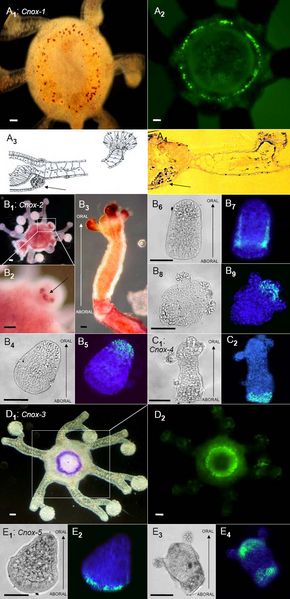Scientists from the Animal Ecology and Cell Biology Institute of the University of Veterinary Medicine Hannover were able to develop a many-headed jellyfish when Cnox genes were deactivated.
These genes are closely related to the Hox genes of the “higher” animals and are responsible for forming the body along the main body axis, from the anterior to the posterior.
Multiple-headed animals were recognized as a rare developmental anomaly of unknown origin in various animals. Now for the first time, having many heads is shown to be an inducible and reproducible development when a single regulatory gene is experimentally deactivated.

This provides new insights into the genetic regulation of head formation in basal animals. If a certain Cnox gene is deactivated, scientists can generate jellyfish of the Eleutheria dichotoma species with precisely two heads, whereby both heads are completely functional (regarding food intake, for instance). Deactivation of another gene leads to multiple heads.
In nature, jellyfish (or other animals) with multiple heads are rarely found. This may be because adding heads on an otherwise unaltered body appears to offer no fitness advantages on which natural selection could act. The TiHo researchers Dr. Wolfgang Jakob and Prof. Dr. Bernd Schierwater report, however, that the structural changes they see in association with polycephaly could have conveyed substantial advantages to drive macro-evolutionary change.
“It would be conceivable that colony-forming cnidarians, including those which build coral reefs, have emanated from individually living ancestors. Parallel to the generation of multiple heads the animals might have enlarged and structured their posterior body region in such a way that animal colonies were able to emerge,” Schierwater reported. Background to such thoughts is that cnidarian colonies are made up of multiple heads which share a common “gut” (gastrovascular) system.
A significant difference between the many-headed jellyfish in the laboratory and the many-headed mythical monster Hydra is worth mentioning. Every time Hercules decapitated the Hydra, two new heads immediately grew back. In the case of the Eleutheria jellyfish in the laboratory, only one head regrows after decapitation.
Source: Changing Hydrozoan Bauplans by Silencing Hox-Like Genes






Comments